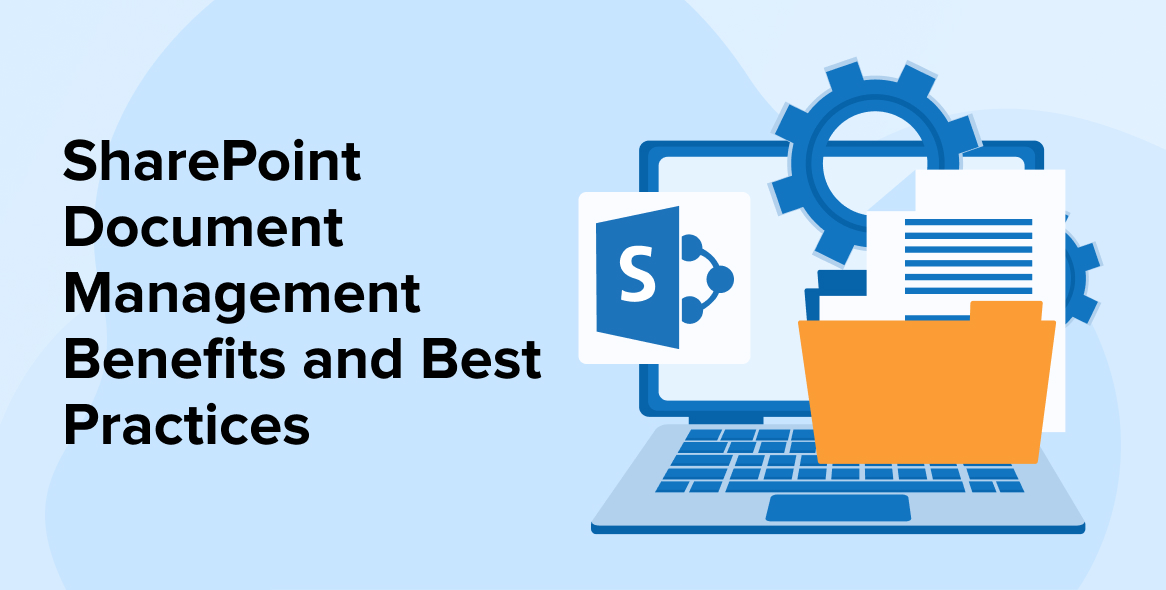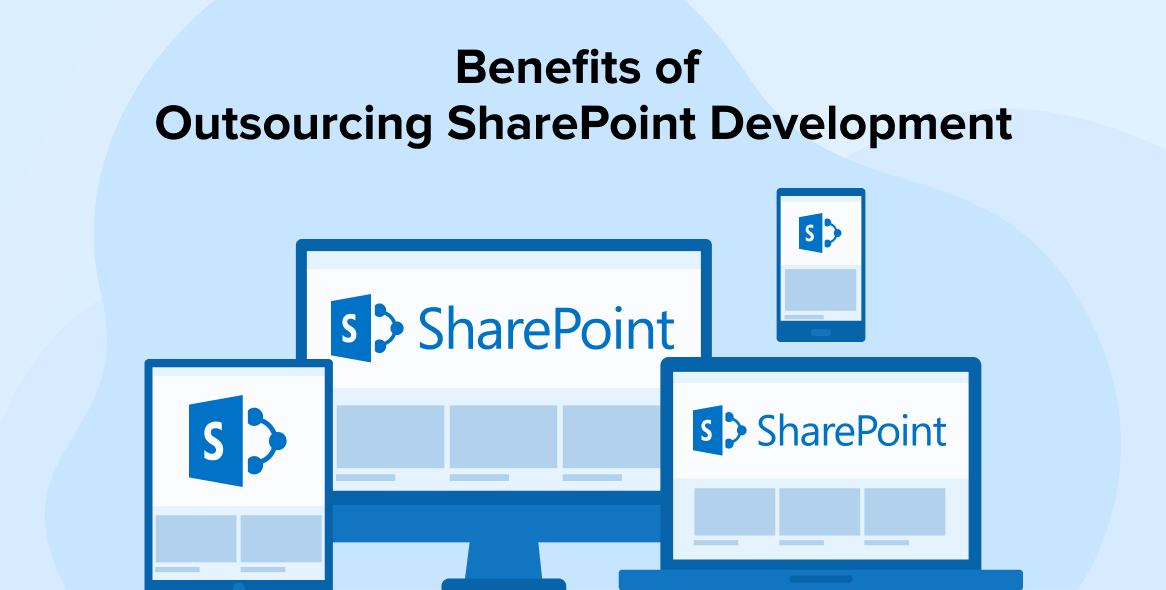
Enterprises are unique in the way they manage their operations as there is so much that they create, design, and deliver regularly. Therefore for every unique action, there should be an equivalent source for managing such bespoke activity. Enterprise Content management is one of the most arduous tasks for businesses to regularly meet. Microsoft is a leading name in Content Management systems and without much guessing, we know that it is SharePoint that is a leading name in content management.
Challenges to managing content can be quite a herculean task and will definitely result in unexpected loss. The reasons or challenges can be anything from no organizational focus or no clear decision or action or lack of contribution from major stakeholders, incomprehensible changes, and many more. If the content is not managed aptly, there are chances of bigger failures occurring at once. So, to overcome this, leveraging the benefits of the SharePoint content management system is the right option. But still, there are companies unsure of the potential of SharePoint and don’t know in which aspects will this outperform. So, brace yourself because we are going to highlight all the essential aspects of CMS – Content Management System and also what makes Microsoft SharePoint CMS a wise choice for your business.
1. What is CMS?
A content management system (CMS) is a type of software that allows users to develop, manage, modify, share, store and publish content on a platform. Besides this, CMS is a platform that can handle all types of technical processes like file system management. Content management enables handling the documents and storing them in structures like Excel files, PDF, and Word.
Enterprise Content generally means any type of media that circulates within an organization. And it can be in any format like videos or documents or images. It also includes memos, shared emails, training videos, workflow material, reports, and web posts. All these types of content creation use multiple contributors and they must be perfectly accessible to team members who require it. And this is why content management is a complicated concept. In this case, companies use content management systems to make it simple and easy.
2. What is SharePoint CMS?
A SharePoint CMS is just like any other content management system. It is being used by popular CMS like Joomla and WordPress to handle the documents. And the sites that use SharePoint CMS can easily publish and present the content to the internal management systems and other applications. Besides, they can also present it to a specified audience in the firm. For instance, the companies who use SharePoint as a CMS, utilize the software to deliver content to web pages, homepages, information pages, team sites, and more.
3. Features of SharePoint Content Management System
3.1 Asset Library
Asset library enables users to manage media assets such as videos, images, audio, and more seamlessly. It comes with three different functions – automatic extraction of metadata, thumbnail view for rapid browsing, and more metadata features than usual documents. The inclusion of diverse content implies a variety of functionalities that are not included in standard libraries.
Additionally, SharePoint also has built-in players which allow you to play audio files as well as video files from team sites, publishing sites, portals, etc.
3.2 Content Organizer
With SharePoint CMS, content authors get access to one of the features that are known as Content Organizer. It comes with drop-off libraries and a set of rules that helps to automatically route content. Besides, it even avoids content duplication issues.
3.3 Sharing of Content Types
SharePoint CMS allows sharing of different types of content among sites and this is possible because of its unique features. It also helps in creating connections to the services. Basically, Shared Content Types enable SharePoint users to define various collections of documents and columns.
3.4 Records Management
In any business, record retention is the most important thing. Therefore, organizations must take advantage of SharePoint Online’s records management system. It activates record management in every library in the platform itself. SharePoint offers customized data handling changes to be seen in real-time by all stakeholders. Along with handling custom data and data management, SharePoint can also make the final product storage easier to fetch and analyze. This eliminates the need to go the extra mile in order to transmit paper copies for legal, medical, or financial reasons. It also makes files accessible to everyone with an internet connection and in an orderly fashion. Finally, SharePoint enables the locking of these documents as well as periodical file audits for further security and final approvals. Users that use SharePoint Online for record management can not only export its material but also maintain track of holds placed on specific content.
3.5 Document Management
Document management is one of the biggest benefits of SharePoint. This technology helps in creating, updating, sharing, and collaborating files with different teams of the firm. Each library of SharePoint displays useful data and files when they are opened or modified. Besides, if the user wants to move or add files, all they need to do is drag and drop them from source to destination. You can also build document workflows using SharePoint. Enlisted below are some of the management features of SharePoint which can play an important role in providing essential help in document management:
- SharePoint functions are like hubs, gateways, or even a centralized system for all business-related information and content.
- Stakeholders can easily pinpoint the site they want to discover, utilize, share info, retrieve, and use its information for further tasks.
- Within document management, SharePoint also enables you to create the sets and groups of people you want to organize and discover the data or content you’re looking for.
- SharePoint will make things easier for the users, as for each document it grants a unique ID as an identifying code. Then for further tasks, you can even categorize the docs involved into levels or tiers depending on their relevance, distinct nature, and specification.
- SharePoint works well with Microsoft Office utilities like Excel, Power BI, etc.
3.6 Metadata Service and Navigation
SharePoint CMS comes with advanced content management features for blog posts. And it enables users to create and manage both formal and informal types of metadata. Its managed metadata service is consistently managed across various business contents. Besides this, metadata navigation in SharePoint CMS is activated for many libraries and data. Metadata also helps SharePoint users to locate and retrieve the same document from the libraries.
4. Reasons to Choose SharePoint for Enterprise Content Management
A SharePoint CMS is a content management system that can be easily integrated into a SharePoint site. Many renowned websites have used SharePoint to manage and publish material online using popular content management systems such as WordPress or Joomla. This can be used across any publishing site. SharePoint can easily be used for web content management. There are multiple added features that are part of the SharePoint environment included in the development of sites. Enterprises, particularly those who currently use SharePoint for internal document management or other applications, might easily choose to use SharePoint to satisfy their requirements throughout the content life cycle.
SharePoint is capable of managing almost all types of content management systems and that’s the only reason, it is more preferred by businesses. Some of the reasons to choose SharePoint for Enterprise Content Management (ECM) are:
- Offers robust third-party integration support.
- Management Costs are lesser than various other services.
- Enhanced security
- Intuitive and easy to use
- Integration with multiple file types
- Centralized administration
- Optimized content delivery
- Built-in multi-purpose functionality
- Flexibility in customization
5. The Closing Words
As seen in this blog, SharePoint enables businesses easy access to the store, sync, and share content as per the firm’s requirements. With the use of the SharePoint Enterprise Content Management System, users can efficiently use services like SharePoint Consulting, SharePoint Migration, and SharePoint Development for better functionality and higher productivity. Basically, SharePoint for ECM enables capturing, reading, and indexing of useful data and offers comprehensive workflow automation. This shows why businesses must choose SharePoint as their content management solution.




Comments
Leave a message...